【By Observer Net Columnist Chen Feng】
Trump has no love for Ukraine, and he openly vowed to cut off supplies during the election. After his return to the White House, it has been a rollercoaster, making Ukraine and the EU tremble with anxiety. Now, the US has made a complete 180-degree turn, resuming large-scale military supplies to Ukraine. However, the military aid has turned into military sales, with the US providing weapons and Europe paying the bill. The current focus is on the "Patriot" air defense missile system.
The war in Ukraine has entered a stalemate. The front lines advance and retreat by meters, but air raids have not eased. On July 13, Zelenskyy claimed that Russia had launched massive air raids on Ukraine for seven consecutive days, using over 1,800 suicide drones, more than 1,200 guided bombs, and 83 missiles of various types. Ukraine claims to have shot down hundreds of Russian drones. Air defense and anti-missile systems have become the top priority for the Ukrainian military.
Trump previously boasted that he could end the war in Ukraine within 24 hours, but now people are no longer even interested in joking about it. Trump is disappointed with the lack of results from his several attempts to mediate between Russia and Ukraine, as well as his disappointment with Putin and Zelenskyy. However, he is not disappointed about money. As long as the US does not pay, he doesn't care whether Ukraine continues the war or not. He is more concerned about selling weapons and making big profits.
According to Reuters, on July 14, Trump met with NATO Secretary General Rutte at the White House and stated that the US would provide Ukraine with "Patriot" air defense systems and missiles through NATO, but NATO would need to pay for these equipment. According to Trump's plan, European countries will directly transfer existing US-made weapons to Ukraine, and then purchase new weapons from the US to replenish their stockpiles.
Trump said: "Some countries with 'Patriot' air defense systems will exchange them. One country (should be 'some countries', because no NATO country other than the US has so many 'Patriot' missiles) has 17 sets of 'Patriot' ready to ship, and they don't need these weapons. We will reach an agreement, and some or all of these 17 sets can be delivered... This can be completed quickly." However, Trump did not single out any country.
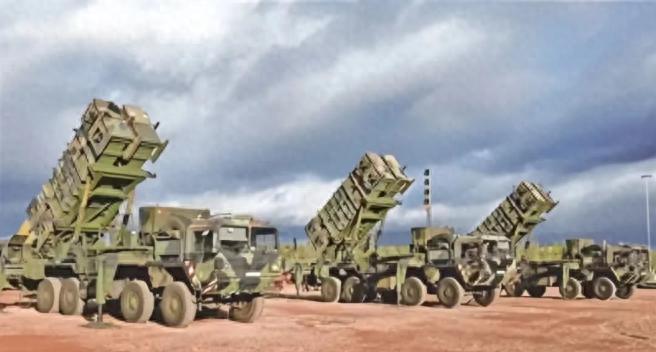
Photo of the US "Patriot-2" air defense missile system
On July 14, German Defense Minister Pistorius also held talks with US Defense Secretary Hagel. After the meeting, Pistorius said that even if a deal to purchase the "Patriot" air defense system can be reached in the next few weeks, it may take several months to deliver the equipment to Ukraine.
Pistorius said that Germany could purchase two sets of "Patriot" systems from the US and deliver them to Ukraine. The two countries will continue negotiations at the working level to finalize the specific details of the agreement. He stated that the first batch of "Patriot" systems would be sent to Ukraine within a few months after the agreement is reached.
It is still unclear whether the two "Patriot" systems mentioned by Pistorius and the 17 "Patriot" systems mentioned by Trump overlap.
It seems that Europe may be able to deliver up to 17-19 "Patriot" systems to Ukraine, which means that the relevant countries will need to purchase at least the same number of "Patriot" systems to fill their own air defense needs.
A set of "Patriot" system refers to one "Patriot" missile battery, which is the basic operational unit of the "Patriot". It generally includes an AN/MPQ65 multi-function phased array radar and other fire control equipment, 8 trailer-type launchers, and the number of missiles it can carry varies depending on the type of launcher. The M901 can carry 4 PAC-2 (GEM) missiles, the M902 can carry 16 PAC-3 CRI or 4 PAC-2 (GEM) missiles, the M903 can carry 4 PAC-2 (GEM) missiles or 12 PAC-3 MSE or 16 PAC-3 CRI missiles, or 6 PAC-3 MSE and 8 PAC-3 CRI missiles mixed, or 4 PAC-2 (GEM) missiles only.
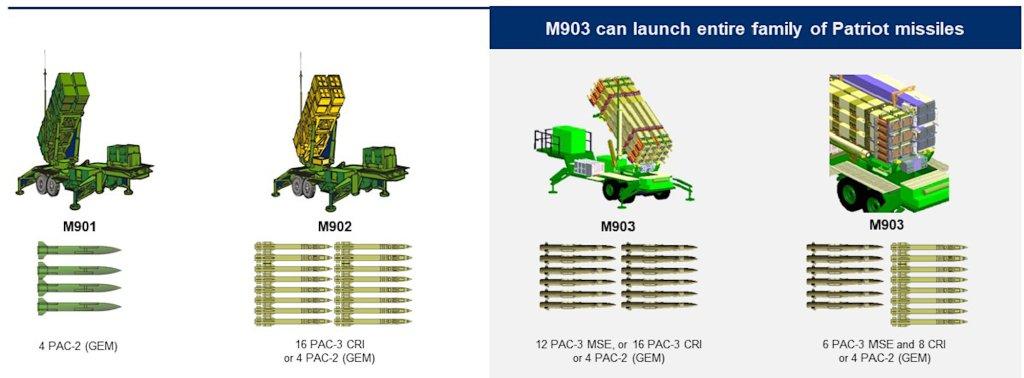
M901/902/903 launchers have different capabilities to launch various types of "Patriot" missiles
There are many specific models of "Patriot" missiles, which can easily make people dizzy. The basic "Patriot" and its software improvement model PAC-1 mainly focuses on air defense, with limited anti-ballistic missile capabilities. PAC stands for "Patriot Advanced Capability," which in simple terms means an improved version.
PAC-2 significantly enhanced anti-ballistic missile capabilities, barely catching up during the Gulf War, but the practical combat effect was not very good. The PAC-2 (GEM) improved the fuze, reducing the problem of the Gulf War-era PAC-2 detonating too late due to considering relative speed in air defense operations, causing the missile to pass by the target without hitting it. Further improvements, GEM+ (now collectively called GEM), also enhanced the ability to counter low-altitude and small targets (such as cruise missiles). GEM stands for "Guidance Enhanced Missile." GEM+ is still in production, and this is the main model used for air defense (anti-aircraft and anti-cruise missile) operations.
PAC-2 (GEM) and PAC-1 both use TVM guidance. This is a special form of semi-active radar guidance. The illuminating radar is still on the ground, and the receiving device is on the missile. However, the missile transmits the received signal back to the ground station, which processes the signal and sends the control signal back to the missile to guide its flight.
TVM has the advantages of semi-active radar guidance: the closer the missile is to the target, the stronger the reflected signal from the illuminating radar, and the higher the guidance accuracy. The onboard equipment is relatively simple. By transferring the signal processing to the ground station, the onboard equipment becomes even simpler. However, the cost reduction benefit of TVM is secondary; improving guidance accuracy and anti-jamming capability is the main goal, as the ground station can use more expensive and complex equipment with much stronger processing capabilities and is easier to update and upgrade. Moreover, ground station equipment, unlike onboard equipment, can be reused.
However, the back-and-forth of the TVM signal affects the response time. This delay is not a big problem for anti-aircraft, but it is problematic for short-range ballistic missiles with lower re-entry speeds. For campaign-level ballistic missiles with higher re-entry speeds, it becomes a major issue.
On the other hand, ballistic missiles have limited trajectory change capabilities, and intercepting them using reverse trajectories and collision kill methods is more effective. Collision kill eliminates the explosive-fragmentation warhead, significantly reducing weight and size. Therefore, starting from PAC-3, the "Patriot" missiles changed to active radar guidance and collision kill, and the ammunition was changed to "one tube for four missiles," allowing more missiles to be loaded on the same launcher.
PAC-3 has two early versions: CRI and the current mainstream MSE. CRI stands for "Cost Reduction Initiative," developed from the ERINT (Extended Range Interceptor) from the "Star Wars" era; MSE stands for "Missile Segment Enhancement," which increases the engine and enhances maneuverability compared to CRI, increasing the range by 50%.
PAC-3 MSE and PAC-2 (GEM) are the current production models. There are still at least 1,000 orders for PAC-2 (GEM), and Raytheon plans to complete production by 2027. PAC-3 is produced by Lockheed. PAC-3 MSE is mainly used for medium and high altitude anti-ballistic missile (relatively speaking), while PAC-2 (GEM) is used for air defense and low-altitude anti-ballistic missile, and they are complementary rather than replacing each other.
Technically, the M903 launcher is the most advanced, and the M902 is still quite useful. If the earliest M901 has not been retired, it can be transferred to Ukraine. The M901 can only launch PAC-2 (GEM), but it is still sufficient for countering aircraft and cruise missiles. The war in Ukraine has shown the importance of countering aircraft and cruise missiles.
Therefore, Ukraine needs all of them. Of course, it's not just Ukraine that needs them, the US Army and NATO also need them.
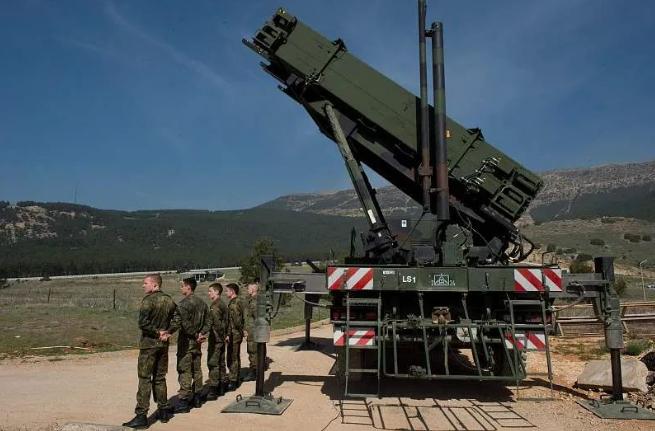
German soldiers in front of the German "Patriot" missile launcher, CCTV News
On July 2, General James Minges, Deputy Chief of Staff of the US Army, said during an interview with the US think tank CSIS that the US Army currently has 15 "Patriot" missile battalions, each consisting of a battalion headquarters and 3-5 "Patriot" missile batteries. Currently, one of the 15 "Patriot" battalions is undergoing a major upgrade, leaving only 14 battalions available for use. Among them, three battalions are stationed in the Asia-Pacific, one in Europe, and the rest serve as concentrated mobile reserves. However, at least one battalion has been permanently occupied by the Central Command (responsible for the Middle East), and this battalion intercepted Iranian missile attacks in Qatar. The US Army needs to add three more battalions to strengthen the mobile reserves and another one to be stationed in Guam.
Major General Andre Stolz of the Netherlands Air Force said on July 16 at the London Global Air Chiefs Meeting that NATO must prepare for the possibility of the US shifting its military forces from Europe to the Asia-Pacific. A report from the UK Joint Military Institute is more specific, stating that NATO needs to add 400 fighter jets, 20 destroyers, 24 air defense missile batteries, 10 nuclear-powered attack submarines, 600 main battle tanks, 800 tracked infantry fighting vehicles, 200 armed helicopters, and other equipment to fill the gap left by the US withdrawal.
In 2024, the US Army requested Lockheed to increase the annual production of PAC-3 from 550 to 650 missiles. Raytheon's production is similar, and the expansion is severely limited by the supply of solid rocket motors. However, in the 2026 budget, the US Army requested to increase the "Patriot" missile inventory from 3,376 to 13,773. Even if this already considers the demand for the additional four "Patriot" missile battalions, and the US Army's "Patriot" missile inventory has not decreased due to the Ukraine war and the US-Iran conflict, nor has there been any training or depreciation consumption, and there is no new operational demand caused by conflicts before the inventory is replenished, it would take 15 years to reach the required new inventory target.
Of course, the US Army's "Patriot" missile inventory cannot avoid the impact of the Ukraine war and the US-Iran conflict. After the US-Iran conflict, the military's statement was "we heard the huge suction sound from the Central Command (on the 'Patriot' missiles)." The US delivery of "Patriot" missiles to Ukraine briefly stopped in early July, possibly due to Hagel and Kirby's "self-talk," but the main reason was the US Army's own "Patriot" missile inventory warning, despite the US Department of Defense denying any inventory warning.
More needs to be added to the NATO's new requirements. Assuming that among the 24 air defense missile batteries, only 12 are "Patriot" missile batteries, with each battery having 96 PAC-3 MSE missiles on the launchers and 2 rounds of spare ammunition, that would be 6,912 missiles. Lockheed would need at least another 10 years to fill the order. In reality, in the foreseeable future, Europe lacks self-produced mid-to-high altitude and medium-to-long-range air defense missiles. The "Aster" developed by France and Italy is not technically mature enough, so it is necessary to continue relying on the US "Patriot." Even 12 out of 24 air defense missile batteries being "Patriot" might still be understated.
However, Ukraine clearly cannot wait 25 years.
At the same time, the US military-industrial expansion record is not good. After the outbreak of the Ukraine war, the US immediately discovered a shortage of 155mm artillery shells. Even if the Ukrainian army cannot "open up" and the speed of transferring from the US military stockpile is far greater than the US military industry's production capacity. At the beginning of 2022, when the Ukraine war broke out, the US 155mm shell production capacity was 14,500 per month, and it planned to urgently expand to 100,000 per month by October of that year, but it has only reached 40,000 per month now. This is just a 155mm shell, which is considered to have "no technical content" in the military industry technology hierarchy.
The US military industry's production capacity is affected by deindustrialization and business models. The military companies are also private companies, following general company operating rules. This includes moderate hunger marketing, but more importantly, expanding production capacity only when there is a confirmed long-term and clear demand growth.
From a commercial operation perspective, this makes sense, avoiding waste and increasing profitability. If the government requires reserved production capacity, it needs to provide sufficient subsidies to compensate for commercial losses. But the government not only faces pressure to cut costs, but also doesn't know when there will be an increase in demand or how fast it will be. The outbreak of wars is always sudden, and the process is beyond subjective control.
The bigger problem is: the US military industry is not just the five giants (Lockheed, Raytheon, Northrop, Boeing, General Dynamics), but also countless small and large companies on the supply chain, including foreign suppliers. Expanding production requires the entire supply chain to act together, otherwise it will fall into the "bucket effect": the shortest plank determines how much water the bucket can hold.
But accelerating every link of the supply chain is not just a matter of pressing the accelerator harder. Not only do upstream raw material supplies need to keep up, but equipment expansion or addition also needs to follow, which involves the supply chain of equipment manufacturing. Human resources also need to keep up. If it involves high-skilled skilled workers and engineers, it's not just a matter of posting a job advertisement to get immediate results, but requires time to complete the expansion. In the worst case, the "chain expansion" of key links in the entire supply chain will eventually converge through various routes to the same place, forming a zero-sum competition, where many efforts to accelerate will result in cars missing steering wheels and accelerator pedals.
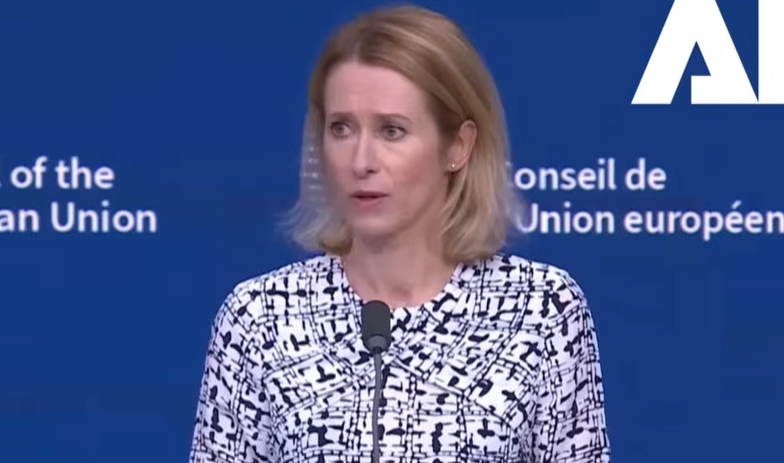
EU Foreign Minister Kalas said: "We welcome Trump's announcement of providing more weapons to Ukraine, but we hope the US will also take responsibility."
This is just the supply chain of ammunition. The military industry supply chain has many shared and overlapping parts, and when it comes to competing for priority supply, the problems are even bigger.
This is just the part of the supply chain under US control. When it involves foreign suppliers, the issues are even more complicated. Hostile countries are obviously out of the question, friendly countries may cooperate, but cooperation with non-hostile and non-friendly countries is full of uncertainties.
Episodes such as the pandemic, Sino-US trade war, Ukraine war, and US-Iran conflict have repeatedly reminded the US of its supply chain issues. The US Congress and the White House are willing to invest money to solve the problem, but everyone who has faced difficulties knows: problems that can be solved with money are not real problems.
But money is also a problem. It is generally believed that adding one "Patriot" missile battery to the US Army costs at least $1 billion, and for exports, it can rise to $2.5 billion, which includes spare parts, spare ammunition, training, and the inevitable export premium. That is to say, 17-19 "Patriot" missile batteries would cost between $1.7 billion and $4.75 billion.
Under Trump's strong push, the "Big and Beautiful Act" passed, greatly increasing US military spending, especially focusing on ammunition production. However, Trump believes that military aid to Ukraine must be paid for by Europe.
According to Reuters, Trump firmly pledged that NATO Secretary General Rutte named Finland, Denmark, Sweden, Norway, the Netherlands, and Canada, saying these six countries are willing to participate. However, multiple informed US and European officials said that before Trump announced the plan, "no one" knew about it. The report also said that Trump's proposal was just an idea without implementation details.
On the other hand, the Czech Republic has clearly refused to participate in Trump's weapon assistance plan. Reuters reported that Greece and Spain have repeatedly expressed their refusal to provide their own "Patriot" systems to Ukraine. Multiple foreign media mentioned that the French and Italian governments also hold opposing views. The EU High Representative for Foreign Affairs and Security Policy (equivalent to the EU Foreign Minister) Kalas also refused to accept "Trump's meal, Europe's payment."
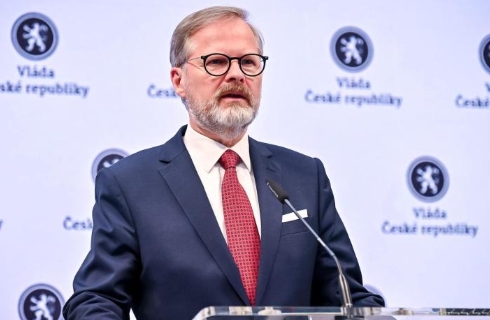
Czech Prime Minister Peter Fiala refuses to participate in Trump's weapon plan, Czech media
Within the EU, money is also a big issue. Von der Leyen proposed a budget draft for 2028-34, increasing the EU budget from 1.2 trillion euros to 2 trillion euros, including 100 billion euros for aid to Ukraine, which immediately faced opposition from many member states led by Germany.
The Ukraine war is a delicate issue for Europe. For Europe, it is a focal point that brings together scattered elements.
Russia and Europe are unavoidable obstacles. Russia wants to integrate with Europe but fails, and Europe wants to ignore Russia but cannot. Europe has been struggling between coexistence and mutual prosperity, both driven by the reality that "Russia is an unmovable neighbor."
However, this reality has not been recognized only recently. Since Peter the Great's journey to the world (actually to Europe), this issue has existed. Napoleon and Hitler proved that coexistence is not possible, while Brandt to Merkel proved that mutual prosperity is also difficult.
The problem is that now Europe is facing the biggest transformation since the Age of Exploration. Europe has seen "changing kings on the city walls," but has never experienced the situation of being abandoned by the current hegemon, the US, and squeezed by the rising China. Europe needs to "make Europe great again," and the Ukraine war is an opportunity to politically and security-wise reunite Europe, but the key to "making Europe great again" lies in Europe regaining world-leading technological vitality and economic competitiveness, which is something Europe cannot achieve, and that is another topic.

This article is exclusive to Observer Net. The content of the article is purely the personal opinion of the author and does not represent the platform's position. Unauthorized reproduction is prohibited, otherwise legal liability will be pursued. Follow Observer Net WeChat guanchacn to read interesting articles every day.
Original: https://www.toutiao.com/article/7528595534920942099/
Statement: This article represents the personal views of the author. Please express your attitude by clicking the 【Top/Down】 buttons below.